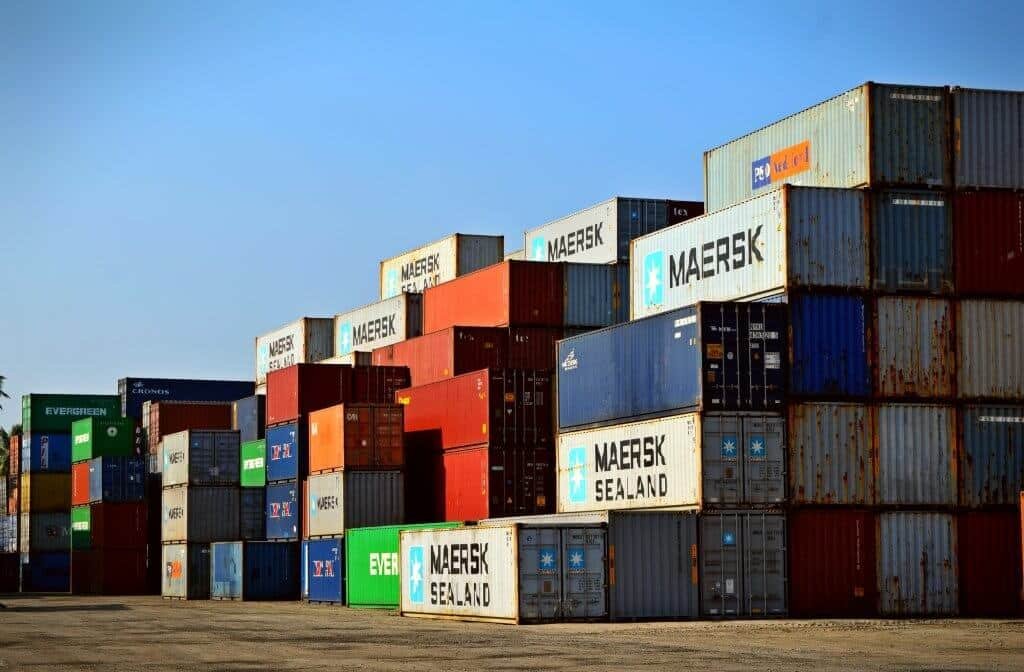Starting a new business is an exciting venture, but it can also be overwhelming, especially when it comes to logistics. As a new business owner, you may be wondering how to navigate the complex world of logistics while still ensuring that your products reach your customers on time and in good condition. Whether you’re shipping products locally or internationally, there are many factors to consider, such as transportation, warehousing, and inventory management. But fear not, this beginner’s guide will provide you with the essential knowledge and tools you need to succeed in the world of logistics. From selecting the right shipping methods to optimizing your supply chain, we’ll cover all the basics to help you streamline your operations and improve your bottom line. So, let’s get started on this exciting journey to mastering the art of logistics!
The Role of Logistics in Business
Logistics is an essential part of any business that involves the movement of goods. It encompasses a range of activities, including transportation, warehousing, inventory management, and order fulfillment. The goal of logistics is to ensure that products are delivered to customers in a timely and cost-effective manner.
Effective logistics management can provide a competitive advantage for businesses by improving customer satisfaction, reducing costs, and increasing efficiency. In today’s global marketplace, logistics has become more complex, with businesses needing to navigate multiple transportation modes, customs regulations, and supply chain partners.

To succeed in the world of logistics, it’s essential to have a solid understanding of its role in your business and how to optimize your operations for maximum efficiency and profitability.
Types of Logistics – Inbound, Outbound, and Reverse Logistics
Logistics can be broken down into three main types: inbound, outbound, and reverse logistics.
Inbound logistics refers to the activities involved in receiving and storing raw materials or goods from suppliers. This includes transportation, warehousing, and inventory management.
Outbound logistics involves the activities required to deliver finished products to customers, including order processing, transportation, and delivery.
Reverse logistics is the process of managing the return of products from customers, including handling customer returns, warranty repairs, and recycling.
Each of these types of logistics requires careful planning and management to ensure that products are delivered efficiently and cost-effectively.
Key Logistics Terms and Definitions
To succeed in logistics, it’s essential to understand the key terms and definitions used in the industry. Here are some of the most important logistics terms you should know:
Freight: The goods being transported.
Carrier: The company or individual responsible for transporting the freight.
Transportation mode: The method of transportation used to move freight, such as truck, rail, or air.
Freight forwarder: A company that arranges transportation for goods on behalf of a shipper.
Warehouse: A facility used for storing goods.
Inventory management: The process of managing inventory levels to ensure that products are available when needed.
Order fulfillment: The process of receiving, processing, and delivering customer orders.
By understanding these key terms, you’ll be better equipped to navigate the world of logistics and communicate effectively with carriers, freight forwarders, and other logistics partners.
Logistics Challenges for New Businesses
New businesses face a range of challenges when it comes to logistics. One of the biggest challenges is managing costs while still ensuring that products are delivered on time and in good condition. This can be particularly challenging for businesses that are just starting and may not have the resources to invest in expensive logistics solutions.
Another challenge is finding the right logistics partners. With so many carriers, freight forwarders, and other logistics providers to choose from, it can be difficult to find freight carriers and know which ones will provide the best service at the most competitive prices.
Finally, new businesses may struggle with inventory management, particularly if they are dealing with perishable or time-sensitive products. Effective inventory management is essential to ensure that products are available when customers need them, while also minimizing the costs associated with excess inventory.
Logistics Strategies for Small Businesses
Despite the challenges, small businesses can still succeed in logistics by implementing the right strategies. Here are some tips for optimizing your logistics operations:
1. Choose the right shipping methods: Consider the size and weight of your products, as well as the distance they need to travel when selecting shipping methods. Ground transportation is usually the most cost-effective option for short distances, while air or sea freight may be more appropriate for longer distances or larger shipments.
2. Optimize your supply chain: Look for ways to streamline your supply chain, such as by consolidating shipments, using just-in-time inventory management, or outsourcing certain logistics functions to third-party providers.
3. Leverage technology: Use technology to automate logistics processes, such as inventory tracking and order processing. This can help to reduce errors and improve efficiency.
4. Monitor performance: Keep track of key performance metrics, such as delivery times and inventory turnover, to identify areas for improvement.
By implementing these strategies, small businesses can improve their logistics operations and compete effectively with larger companies.
Choosing the Right Logistics Provider
Choosing the right logistics provider is essential to ensuring that your products are delivered on time and in good condition. When selecting a logistics provider, consider the following factors:
1. Reputation: Look for a provider with a good reputation for reliability, quality, and customer service.
2. Experience: Choose a provider with experience in your industry and with the types of products you need to transport.
3. Network: Consider the provider’s network of carriers and partners to ensure that they can meet your needs.
4. Pricing: Compare prices from multiple providers to ensure that you are getting the best value for your money.
5. Technology: Look for providers that use technology to improve efficiency and provide real-time tracking and reporting.
By taking these factors into account, you can choose a logistics provider that meets your needs and provides the best possible service.
Cost Considerations in Logistics
Cost is a major consideration in logistics, particularly for small businesses with limited budgets. To manage costs effectively, consider the following strategies:
1. Consolidate shipments: Consolidating multiple shipments into a single delivery can help to reduce transportation costs.
2. Use just-in-time inventory management: This approach involves ordering inventory only when it is needed, which can help to reduce storage costs.
3. Negotiate with carriers: Negotiate rates with carriers to get the best possible prices.
4. Leverage technology: Use technology to automate logistics processes and reduce the need for manual labor.
5. Outsource logistics functions: Outsourcing certain logistics functions, such as warehousing or order fulfillment, can be more cost-effective than handling them in-house.
By implementing these strategies, small businesses can manage costs effectively and improve their bottom line.
Technology and Logistics
Technology has transformed the world of logistics, with businesses now able to track shipments in real-time, automate inventory management, and optimize their supply chains using data analytics. Some of the key technologies used in logistics include:
1. Transportation management systems (TMS): These systems help businesses to manage transportation operations, including carrier selection, routing, and scheduling.
2. Warehouse management systems (WMS): WMSs help businesses to manage inventory levels, track products, and optimize storage.
3. Internet of Things (IoT): IoT devices, such as sensors and RFID tags, can be used to track shipments and inventory in real time.
4. Data analytics: Analytics tools can be used to analyze logistics data and identify areas for improvement.
By leveraging these technologies, businesses can improve efficiency, reduce costs, and provide better service to customers.
Logistics Trends to Watch Out For
The world of logistics is constantly evolving, with new technologies and trends emerging all the time. Here are some of the key logistics trends to watch out for:
1. E-commerce: The rapid growth of e-commerce has led to increased demand for fast and reliable logistics solutions.
2. Sustainability: Businesses are increasingly focused on sustainability, with a growing emphasis on reducing carbon emissions and minimizing waste.
3. Blockchain: Blockchain technology has the potential to revolutionize logistics by providing secure, transparent, and efficient tracking of products.
4. Autonomous vehicles: Self-driving trucks and drones are being developed to improve transportation efficiency and reduce costs.
By staying up-to-date with these trends, businesses can stay ahead of the curve and take advantage of new opportunities as they arise.
Conclusion
Navigating the world of logistics can be challenging for new business owners, but with the right knowledge and strategies, it’s possible to succeed. By understanding the role of logistics in your business, choosing the right logistics provider, managing costs effectively, and leveraging technology, you can optimize your logistics operations and improve your bottom line. By staying up-to-date with the latest logistics trends, you can also position your business for success in the years to come.


